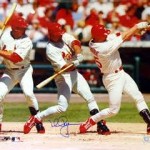Quick Hands did not Sink the Titanic!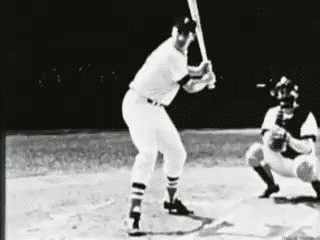
The underlying power of some obvious force is not always evident from the perception of the physical senses. Casual or ignorant observers of sports activities such as boxing, and baseball describe the best of those athletes as having incredibly “quick hands.” These same observers would attest to the greatness of a Nolan Ryan fastball by saying that he had a great arm. The truth to these matters is the same as the scientific fact that the visible portion of the iceberg could not have supplied the power that devastated the ill-informed/prepared luxury-liner, Titanic.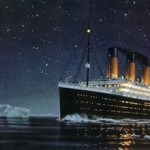

The power behind the 1/10th of visible iceberg  was the enormous 9/10ths mass that lay below the water’s surface.
was the enormous 9/10ths mass that lay below the water’s surface.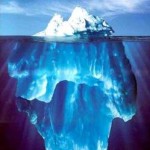
The power behind Mike Tyson’s fist while dispensing a quick “right cross,” emanates from the tidal wave of force that is supplied by his body. 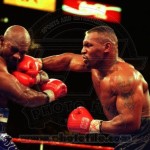 The arm that elicited the force of a Nolan Ryan fastball had only a fraction of the power that the coordinated action of the rest of his body supplied.
The arm that elicited the force of a Nolan Ryan fastball had only a fraction of the power that the coordinated action of the rest of his body supplied. 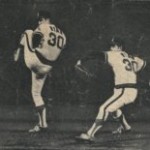
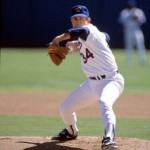
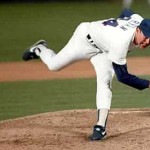 And the ultimate strength and speed of a batter’s swing is determined by more than the quickness of his hands or wrists.
And the ultimate strength and speed of a batter’s swing is determined by more than the quickness of his hands or wrists.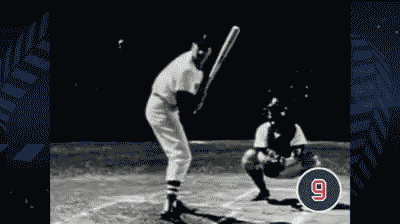
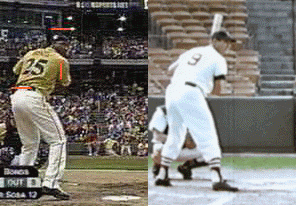
If you are riding on a motor-cycle that is travelling at 100 MPH, and you are merely holding a baseball in your hand, then you simply drop the baseball from your hand, at what speed does the ball travel as it leaves your hand? If you say 100 MPH, you are beginning to understand from where the ultimate power comes when a ball is batted or thrown by a player.
The two major components for demonstrating the prowess of a Professional Baseball player are batting and throwing. Does the power of the batting swing come from the isolated movement and personal strength of the players’ hands? Or does it come from the rapid and controlled rotary transfer of weight that occurs after the front foot plants and the front knee begins straightening diagonally to help force the front hip backwards, to allow the back hip to move quickly forward, with a turning bent back leg?
These actions lead the upper body into an orderly series of movements that precipitate a power surge directing the bat into the ball. The front knee straightens diagonally, and the back bent-knee rotates forward and downward on a pivoting back foot (specifically the outside of Big Toe).
The front shoulder shrugs upward and back, and accentuates the downward and forward action of the back shoulder. The lowered back shoulder facilitates a natural flattening of the bat as it begins its approach to the striking area.
Before the body-weight transfer begins, as the ball is leaving the pitcher’s hand, the body starts to “gather”(brace itself). The front shoulder turns inward (just under the side of the chin), the knees stabilize, and the hands move slightly beyond the breadth of the back shoulder.
The entire body anxiously awaits the precise instant to attack the ball as it enters the “Zone.” The “gathering” occurs at a slow steady pace to facilitate momentum for the quickest possible response at the moment of “weight-transfer.”
At that moment, when the shoulder shrugs, the hands and bat are slanting, in order to quickly level the bat to the plane of the ball and provide substantial range for making contact. The turning body provides a centrifugal force to allow the front arm momentum to easily snap to extension as the bent back arm is starting its drive to fully extend itself and its “palmated” hand (palm up) through the contact-point.
At the “snap” of the front elbow, the medial side of its upper arm is flush against its corresponding breast as contact is made with the ball. This assures that the power transfer from bat to ball is occurring within the confines of the main power source, the body. If the contact is made with front arm separated from the body, the power will be diffused. It should be obvious that the arm(s), acting independently from the body, has a diminished capacity for supplying power.
It is common to evaluate a player’s throwing ability by saying, “…he/she has a strong or weak arm.” It is incorrect, though, to assume that the power of the throw is determined by the strength of the arm. The main power source for throwing is the “Body.”
The arm provides only a fraction of the power. From the coordinated precision of the movement from the feet to legs, to hips, to torso, to shoulders, to arm(s), wrist, hand, and fingers is the ultimate power registered in the “perfect throw.” Obviously, the player with the stronger body and arm, who applies the perfect mechanics, will be more effective than would be a weaker player.
Also, not generally observed is the fact that in throwing “anything” effectively, a principle law of physics always comes into play, namely, “…every action has an opposite and equal reaction.” If a player is right-handed, to be totally effective, he must use the left side of his body with the same intensity as he does the right while performing the throw. 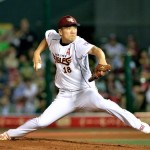
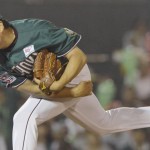 This application is analogous to that which a Karate Master invokes to maximize the power of a “strike” or “punch.” The force exerted backward by the front side of the body not only accentuates the forward movement of the back side but magnifies it, adding considerable power to the throw.
This application is analogous to that which a Karate Master invokes to maximize the power of a “strike” or “punch.” The force exerted backward by the front side of the body not only accentuates the forward movement of the back side but magnifies it, adding considerable power to the throw.
The stronger the body, the greater the possibility for a strong throw, as long as the application of the proper mechanics for movement of shoulder(s) and arm come into play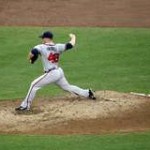

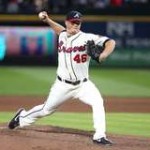
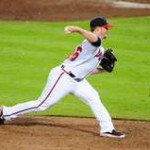
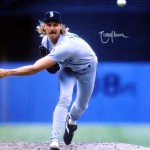 . Unfortunately, the stronger the body the greater the opportunity for injury to the shoulder and arm, if the application of proper mechanics is not enforced
. Unfortunately, the stronger the body the greater the opportunity for injury to the shoulder and arm, if the application of proper mechanics is not enforced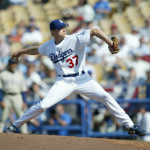
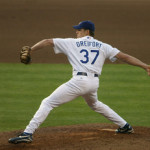 . If the power generated by the body is complete, the torque action of the twisting hips and torso could be too great for a shoulder and arm ill-prepared to deliver the final dimension of the throw. If the shoulder is not locked into a position of stability to launch the (bent) arm, and that (5-ounce) ball forward at the precise time, the strain of having transported the spherical object from the point of origin to destination could have a deleterious effect on the accompanying extremities.
. If the power generated by the body is complete, the torque action of the twisting hips and torso could be too great for a shoulder and arm ill-prepared to deliver the final dimension of the throw. If the shoulder is not locked into a position of stability to launch the (bent) arm, and that (5-ounce) ball forward at the precise time, the strain of having transported the spherical object from the point of origin to destination could have a deleterious effect on the accompanying extremities.
The weight of a 5-ounce object doesn’t seem like it should have any major affect on the throwing apparatus of a strong, well-conditioned athlete. But if you think about the strain one feels in his shoulders while extending his arms outwardly, away from the body, and sustaining that position for a period of time, you could see how any additional weight would accentuate the strain.
Even more stress would be added if you realize the extra force exerted on “those joints” by the weight of the moving arm and ball. “The farther away the ball moves from the body as the arm is preparing to throw, the heavier the weight will be to the strain of the shoulder (and elbow).” 
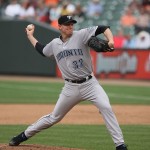 As the ball is being prepared for its launch from the thrower’s hand, it should remain as close as possible to the “Body-Proper” while the arm is “whipping” itself to the forward thrusting position.
As the ball is being prepared for its launch from the thrower’s hand, it should remain as close as possible to the “Body-Proper” while the arm is “whipping” itself to the forward thrusting position.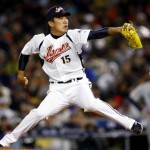
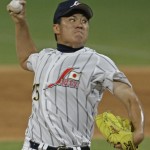

It has been accurately stated that the best of throwers has an arm delivery of the ball that resembles the action of a fast moving whip. To acquire the “correct” type of “whip-action” arm movement, the thrower must proceed with the following arm sequence after the ball is taken out of the glove (presuming the arm is in a bent position as the hand and ball come out of the glove).
The back of the shoulder (posterior deltoid muscle, specifically) brings the hand and ball from the glove, prominently displaying the bent elbow with the hand and ball apparently hanging below, next to the back hip. (Incidentally, the thrower’s position at this point looks similar to that of a person holding a bucket of water by the handle and has just lifted it upward along the side of his body.)
As the thrower’s body moves sideways toward the “target,” and the front foot plants (toes pointed to-ward the target), the hips and torso begin to turn with the backward thrust of the straightening front leg. The backside (hip and torso) gains momentum from the pull of the back knee, while the back foot is pivoting, off the outside of the big toe (same as in hitting).
The throwing shoulder quickly rotates outwardly to force its bent arm to bring the hand and ball upward, slightly above the shoulder. At this point the muscles of the outwardly rotated shoulder contract forwardly (without hesitation) along with those of the entire upper body. As the shoulder thrust is completing its full range of motion, the arm quickly extends forwardly and the wrist snaps the fingers through the center of the ball (fingers straight, perpendicular to the ground) at the point just before release.
The coordinated action of the entire body (right and left sides) provides the power for the correct arm movements to occur rapidly (and safely), and thus sustain a whip-like action to move through the “throw” like a wave of tremendous force.
